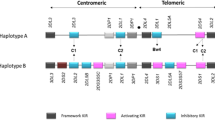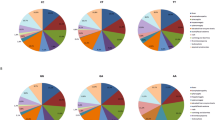Abstract
A pilot study was conducted to determine if host genetic factors influence susceptibility and outcomes in human filariasis. Using the candidate gene approach, a well-characterized population in South India was studied using common polymorphisms in six genes (CHIT1, MPO, NRAMP, CYBA, NCF2, and MBL2). A total of 216 individuals from South India were genotyped; 67 normal (N), 63 asymptomatic microfilaria positive (MF+), 50 with chronic lymphatic dysfunction/elephantiasis (CP), and 36 tropical pulmonary eosinophilia (TPE). An association was observed between the HH variant CHIT1 genotype, which correlates with decreased activity and levels of chitotriosidase and susceptibility to filarial infection (MF+ and CP; P = 0.013). The heterozygosity of CHIT1 gene was over-represented in the normal individuals (P = 0.034). The XX genotype of the promoter region in MBL2 was associated with susceptibility to filariasis (P = 0.0093). Since analysis for MBL-sufficient vs insufficient haplotypes was not informative, it is possible the MBL2 promoter association results from linkage disequilibrium with neighboring loci. We have identified two polymorphisms, CHIT1 and MBL2 that are associated with susceptibility to human filarial infection, findings that merit further follow-up in a larger study.
This is a preview of subscription content, access via your institution
Access options
Subscribe to this journal
Receive 6 digital issues and online access to articles
$119.00 per year
only $19.83 per issue
Buy this article
- Purchase on Springer Link
- Instant access to full article PDF
Prices may be subject to local taxes which are calculated during checkout
Similar content being viewed by others
References
Lymphatic filariasis: the disease and its control Fifth report of the WHO Expert Committee on Filariasis World Health Organ Tech Rep Ser 1992 821 1–71
Lymphatic filariasis: diagnosis and pathogenesis WHO expert committee on filariasis Bull World Health Organ 1993 71 135–141
Mahanty SRM, Raman U, Jayaraman K, Kumaraswami V, Nutman TB Regulation of parasite antigen-driven immune responses by interleukin-10 (IL-10) and IL-12 in lymphatic filariasis Infect Immun 1997 65 1742–1747
Risch NJ Searching for genetic determinants in the new millennium Nature 2000 405 847–856
Wang DG, Fan JB, Siao CJ et al Large-scale identification, mapping, and genotyping of single-nucleotide polymorphisms in the human genome Science 1998 280 1077–1082
Cargill M, Altshuler D, Ireland J et al Characterization of single-nucleotide polymorphisms in coding regions of human genes Nat Genet 1999 22 231–238
Chanock SJ, Foster CB SNPing away at innate immunity J Clin Invest 1999 104 369–370
Subrahmanyam D, Mehta K, Nelson DS, Rao YV, Rao CK Immune reactions in human filariasis J Clin Microbiol 1978 8 228–232
Sasazuki T, Ohta N, Kaneoka R, Kojima S Association between an HLA haplotype and low responsiveness to schistosomal worm antigen in man J Exp Med 1980 152 314s–318s
Chan SH, Dissanayake S, Mak JW et al HLA and filariasis in Sri Lankans and Indians Southeast Asian J Trop Med Public Health 1984 15 281–286
Meyer CG, Gallin M, Erttmann KD et al HLA-D alleles associated with generalized disease, localized disease, and putative immunity in Onchocerca volvulus infection Proc Natl Acad Sci USA 1994 91 7515–7519
Murdoch ME, Payton A, Abiose A et al HLA-DQ alleles associate with cutaneous features of onchocerciasis. The Kaduna-London-Manchester Collaboration for Research on Onchocerciasis Hum Immunol 1997 55 46–52
Yazdanbakhsh M, Sartono E, Kruize YC et al HLA and elephantiasis in lymphatic filariasis Hum Immunol 1995 44 58–61
Brattig NW, Tischendorf FW, Reifegerste S, Albiez EJ, Berger J Differences in the distribution of HLA antigens in localized and generalized form of onchocerciasis Trop Med Parasitol 1986 37 271–275
Abel L, Demenais F, Prata A, Souza AE, Dessein A Evidence for the segregation of a major gene in human susceptibility/resistance to infection by Schistosoma mansoni Am J Hum Genet 1991 48 959–970
Yazdanbakhsh M, Abadi K, de Roo M et al HLA and elephantiasis revisited Eur J Immunogenet 1997 24 439–442
Rodrigues V, Jr, Piper K, Couissinier-Paris P, Bacelar O, Dessein H, Dessein AJ. Genetic control of schistosome infections by the SM1 locus of the 5q31–q33 region is linked to differentiation of type 2 helper T lymphocytes Infect Immun 1999 67 4689–4692
Dessein A Genetic predisposition to infectious diseases Med Trop (Mars) 1997 57 10–12
Dessein AJ, Hillaire D, Elwali NE et al Severe hepatic fibrosis in Schistosoma mansoni infection is controlled by a major locus that is closely linked to the interferon-gamma receptor gene Am J Hum Genet 1999 65 709–721
Marquet S, Abel L, Hillaire D et al Genetic localization of a locus controlling the intensity of infection by Schistosoma mansoni on chromosome 5q31–q33 Nat Genet 1996 14 181–184
Mohamed-Ali Q, Elwali NE, Abdelhameed AA et al Susceptibility to periportal (Symmers) fibrosis in human schistosoma mansoni infections: evidence that intensity and duration of infection, gender, and inherited factors are critical in disease progression J Infect Dis 1999 180 1298–1306
Dinauer MC, Pierce EA, Bruns GA, Curnutte JT, Orkin SH Human neutrophil cytochrome b light chain (p22-phox). Gene structure, chromosomal location, and mutations in cytochrome-negative autosomal recessive chronic granulomatous disease J Clin Invest 1990 86 1729–1737
Inoue N, Kawashima S, Kanazawa K, Yamada S, Akita H, Yokoyama M Polymorphism of the NADH/NADPH oxidase p22 phox gene in patients with coronary artery disease Circulation 1998 97 135–137
London SJ, Lehman TA, Taylor JA Myeloperoxidase genetic polymorphism and lung cancer risk Cancer Res 1997 57 5001–5003
Bellamy R, Ruwende C, Corrah T, McAdam KP, Whittle HC, Hill AV Variations in the NRAMP1 gene and susceptibility to tuberculosis in West Africans N Engl J Med 1998 338 640–644
Boot RG, Renkema GH, Strijland A, van Zonneveld AJ, Aerts JM Cloning of a cDNA encoding chitotriosidase, a human chitinase produced by macrophages J Biol Chem 1995 270 26252–26256
Boot RG, Renkema GH, Verhoek M et al The human chitotriosidase gene. Nature of inherited enzyme deficiency J Biol Chem 1998 273 25680–25685
Madsen HO, Garred P, Kurtzhals JA et al A new frequent allele is the missing link in the structural polymorphism of the human mannan-binding protein Immunogenetics 1994 40 37–44
Madsen HO, Garred P, Thiel S et al Interplay between promoter and structural gene variants control basal serum level of mannan-binding protein J Immunol 1995 155 3013–3020
Flach J, Pilet PE, Jolles P What’s new in chitinase research Experientia 1992 48 701–716
Collinge DB, Kragh KM, Mikkelsen JD, Nielsen KK, Rasmussen U, Vad K Plant chitinases Plant J 1993 3 31–40
Wang SH, Zheng HJ, Dissanayake S et al Evaluation of recombinant chitinase and SXP1 antigens as antimicrofilarial vaccines Am J Trop Med Hyg 1997 56 474–481
Dissanayake S, Perler FB, Xu M et al Differential recognition of microfilarial chitinase, a transmission- blocking vaccine candidate antigen, by sera from patients with Brugian and Bancroftian filariasis Am J Trop Med Hyg 1995 53 289–294
Adam R, Kaltmann B, Rudin W, Friedrich T, Marti T, Lucius R Identification of chitinase as the immunodominant filarial antigen recognized by sera of vaccinated rodents J Biol Chem 1996 271 1441–1447
Devaney E Lectin-binding characteristics of Brugia pahangi microfilariae Trop Med Parasitol 1985 36 25–28
Hoppe HJ, Reid KB Trimeric C-type lectin domains in host defence Structure 1994 2 1129–1133
Turner MW Mannose-binding lectin: the pluripotent molecule of the innate immune system Immunol Today 1996 17 532–540
Garred P, Richter C, Andersen AB et al Mannan-binding lectin in the sub-Saharan HIV and tuberculosis epidemics Scand J Immunol 1997 46 204–208
Garred P, Pressler T, Madsen HO et al Association of mannose-binding lectin gene heterogeneity with severity of lung disease and survival in cystic fibrosis J Clin Invest 1999 104 431–437
Foster CB, Lehrnbecher T, Mol F et al Host defense molecule polymorphisms influence the risk for immune- mediated complications in chronic granulomatous disease J Clin Invest 1998 102 2146–2155
Winkler C, Modi W, Smith MW et al Genetic restriction of AIDS pathogenesis by an SDF-1 chemokine gene variant. ALIVE Study, Hemophilia Growth and Development Study (HGDS), Multicenter AIDS Cohort Study (MACS), Multicenter Hemophilia Cohort Study (MHCS), San Francisco City Cohort (SFCC) Science 1998 279 389–393
Balotta C, Bagnarelli P, Corvasce S et al Identification of two distinct subsets of long-term nonprogressors with divergent viral activity by stromal-derived factor 1 chemokine gene polymorphism analysis J Infect Dis 1999 180 285–289
Garcia A, Abel L, Cot M et al Longitudinal survey of Loa loa filariasis in southern Cameroon: long- term stability and factors influencing individual microfilarial status Am J Trop Med Hyg 1995 52 370–375
Garcia A, Abel L, Cot M et al Genetic epidemiology of host predisposition microfilaraemia in human loiasis Trop Med Int Health 1999 4 565–574
Garcia A, Marquet S, Bucheton B et al Linkage analysis of blood Plasmodium falciparum levels: interest of the 5q31-q33 chromosome region Am J Trop Med Hyg 1998 58 705–709
Garcia A, Cot M, Chippaux JP et al Genetic control of blood infection levels in human malaria: evidence for a complex genetic model Am J Trop Med Hyg 1998 58 480–488
Knight JC, Udalova I, Hill AV et al A polymorphism that affects OCT-1 binding to the TNF promoter region is associated with severe malaria Nat Genet 1999 22 145–150
Lal RB, Ottesen EA Enhanced diagnostic specificity in human filariasis by IgG4 antibody assessment J Infect Dis 1988 158 1034–1037
Simonsen PE, Dunyo SK Comparative evaluation of three new tools for diagnosis of bancroftian filariasis based on detection of specific circulating antigens Trans R Soc Trop Med Hyg 1999 93 278–282
Bloch P, Simonsen PE, Weiss N, Nutman TB The significance of guinea worm infection in the immunological diagnosis of onchocerciasis and bancroftian filariasis Trans R Soc Trop Med Hyg 1998 92 518–521
Author information
Authors and Affiliations
Corresponding author
Rights and permissions
About this article
Cite this article
Choi, E., Zimmerman, P., Foster, C. et al. Genetic polymorphisms in molecules of innate immunity and susceptibility to infection with Wuchereria bancrofti in South India . Genes Immun 2, 248–253 (2001). https://doi.org/10.1038/sj.gene.6363767
Received:
Revised:
Accepted:
Published:
Issue Date:
DOI: https://doi.org/10.1038/sj.gene.6363767
Keywords
This article is cited by
-
Increased chitotriosidase 1 concentration following nusinersen treatment in spinal muscular atrophy
Orphanet Journal of Rare Diseases (2021)
-
Single nucleotide polymorphisms in the angiogenic and lymphangiogenic pathways are associated with lymphedema caused by Wuchereria bancrofti
Human Genomics (2017)
-
A comprehensive in silico analysis of non-synonymous and regulatory SNPs of human MBL2 gene
SpringerPlus (2016)
-
Particularities of allergy in the Tropics
World Allergy Organization Journal (2016)
-
New Paralogues and Revised Time Line in the Expansion of the Vertebrate GH18 Family
Journal of Molecular Evolution (2013)



